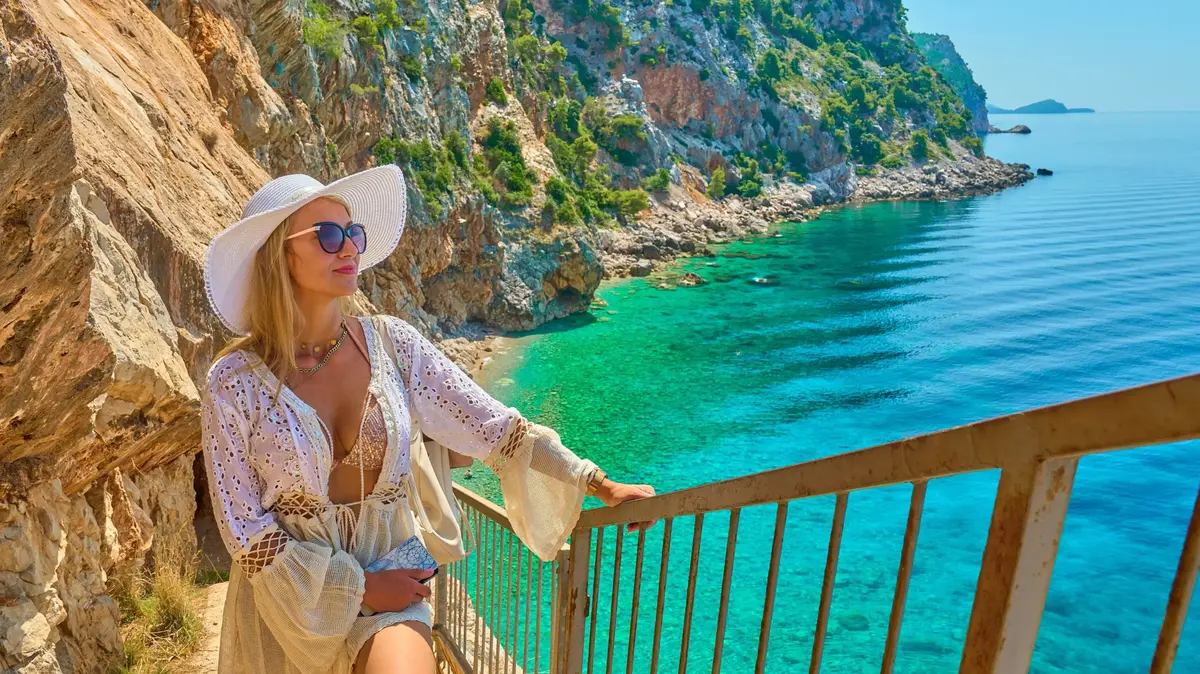Two distinct climatic zones characterize the climate of Croatia.
The mountains, which stretch from north to south inland, form a barrier that prevents extreme cold from reaching the coast, where the climate is Mediterranean.
Temperatures on the coast vary from 7°C in winter to 30°C in summer.
The northern regions have a continental climate with temperatures varying between 0°C in winter and 26°C in summer.
Spring and fall can fluctuate from wet and cold to dry and pleasantly warm.
Read alsoTravel to Croatia, to the unexpected archipelago of the Elaphite Islands
When is the best time to go to Zagreb and northern Croatia?
Croatian capital, Zagreb is worth a detour.
For a weekend, stroll through the old town to admire its colorful architecture and take the time to taste local specialities.
happy
Northern Croatia consists mainly of plains characterized by a continental climate.
The winters are cold, with temperatures often below zero accompanied by snowfall, and the summers hot, with a thermometer showing an average of 26°C but frequent thunderstorms at the end of the day.
The best time to visit the north of the country is between May, June and September, when the mild climate favors the discovery of the region and in particular of
Zagreb
, the capital, where you can stroll through the cobbled streets of the historic districts of the city. high.
If you plan to go in June, you may have the opportunity to attend the INmusic festival which takes place over three days in the open air.
Read alsoZadar and its islands, unknown jewels of Croatia
When is the best time to go to Split, Dubrovnik and the Croatian coast?
In the far south of Croatia, on the Adriatic coast, Dubrovnik is known for its old town surrounded by ramparts.
dreamer4787 / stock.adobe.com
From north to south, the Croatian coastline enjoys a Mediterranean climate.
Between May and September, the weather conditions are pleasant, with temperatures between 25 and 30°C and little rain.
The summer season is to be preferred to take full advantage of the animation of the main seaside resorts of the country and their beaches bordered by the crystal clear waters of the Adriatic, whose temperature is 26°C on average in summer.
Located in
Istria
, at the far north of the coast,
Rovinj
overlooks the sea in a maze of steep alleys, dotted with picturesque pastel buildings.
Nicknamed
the Croatian little Venice
, this city will seduce you with its sublime landscapes which have inspired many writers, including Jules Verne.
Read alsoTravel to Istria, Croatian paradise for hedonists
The green region of Istria.
Eric Martin / Le Figaro
The second largest city in Croatia,
Split
is appreciated for its authentic charm, its cozy restaurants and its lively nightlife.
Located on a peninsula off the Dalmatian coast, at the southern end of the country, the so-called
flower of the Mediterranean
is an excellent starting point to some of the most beautiful islands in the country, image of
Hvar
and
Brac
.
The latter is known to be home to
Zlatni Rat
, a sumptuous beach in the shape of a triangle which will delight swimmers but also windsurfers.
Further south,
Dubrovnik
is one of the must-see cities on a trip to Croatia.
Its preserved monuments and the imposing ramparts surrounding its old town, listed as a UNESCO World Heritage Site, served as the setting for the famous Game of Thrones series, thus giving it international fame.
Winters on the coast are mild, with an average temperature of 10°C, but rainy, especially between October and December.
During this season, the coast is subject to the
Bora
, a strong wind coming from the northeast that can considerably cool the temperatures.
SEE ALSO
: In Croatia, listen to the sea organ of Zadar!
When is the best time to go to Plitvice and central Croatia?
Halfway between Zagreb and the Adriatic coast, the Plitvice Lakes National Park is one of the most beautiful natural treasures in Europe.
stock.adobe.com
Composed of mountains and high plateaus, the central part is marked by harsher and snowier winters than in northern Croatia.
Temperatures reach up to 20°C in summer, but the higher the altitude, the cooler the climate.
The summer season lends itself wonderfully well to tourism in this region, famous for being home to the Plitvice Lakes National Park, open all year round, considered one of the natural treasures of the European continent because of its superb lake formations.
The lakes occupy different levels of land, giving rise to superb waterfalls.
Hiking enthusiasts can explore the park along a series of paths, partly linked by wooden planks from which you can enjoy








